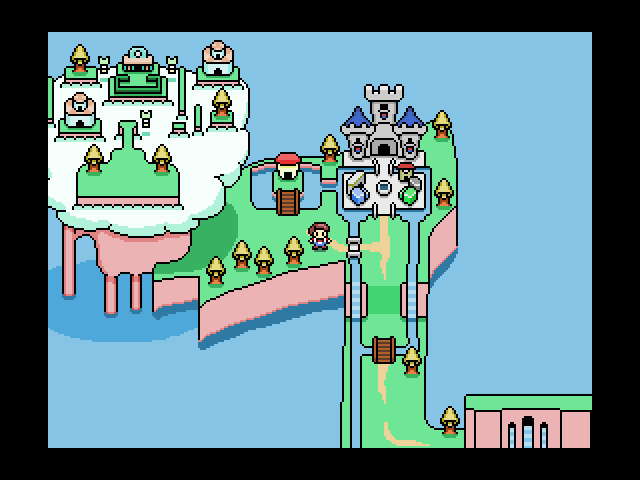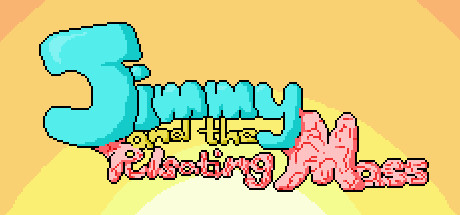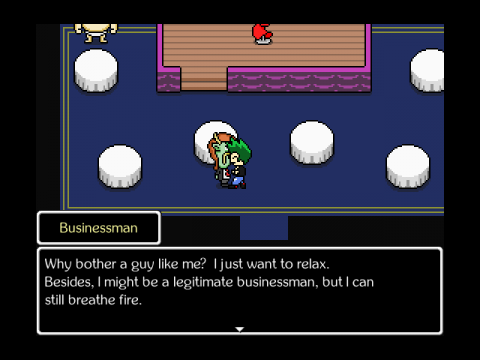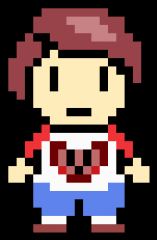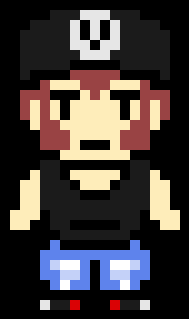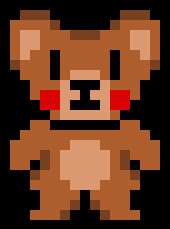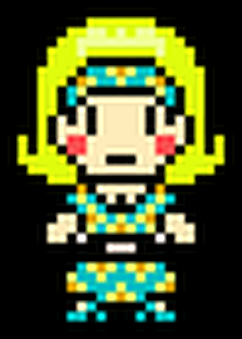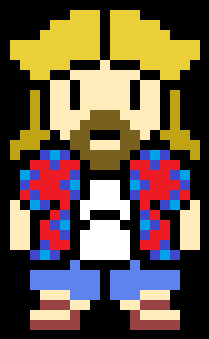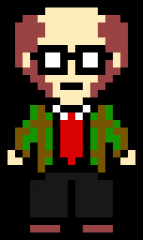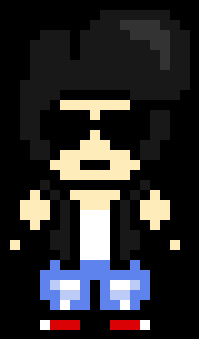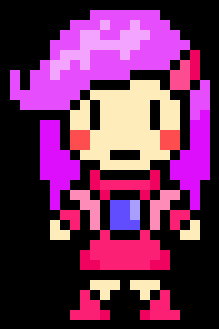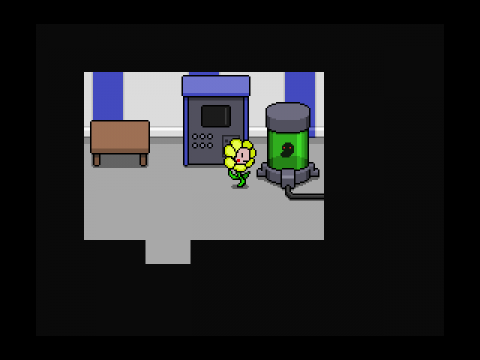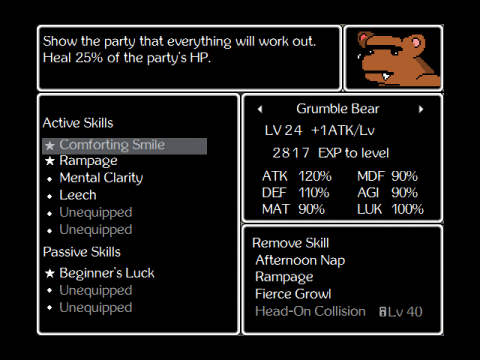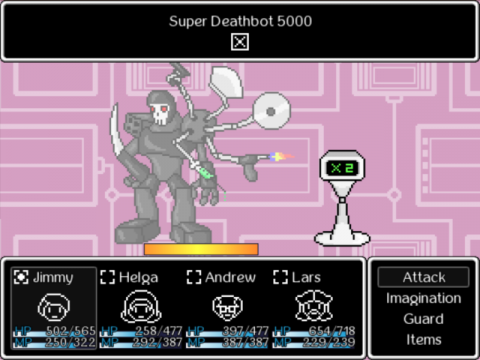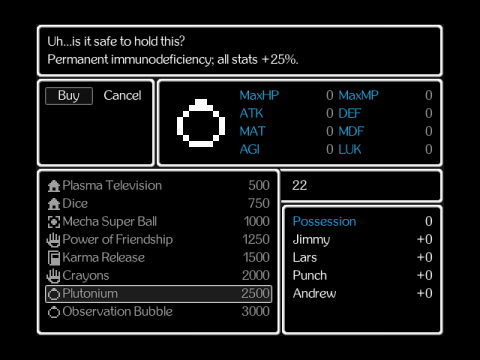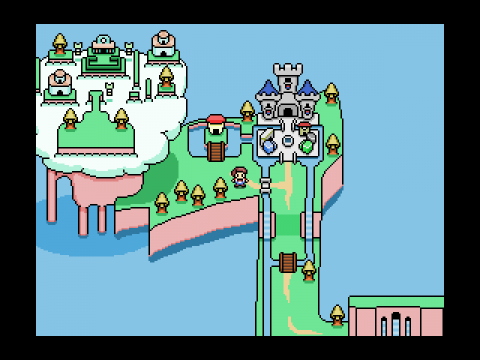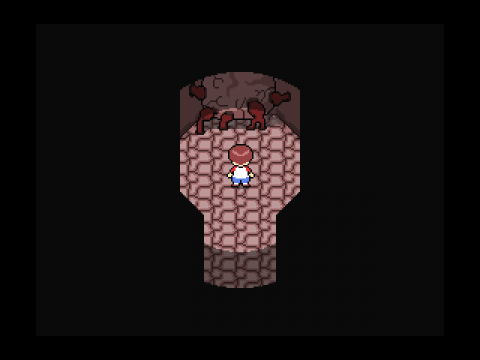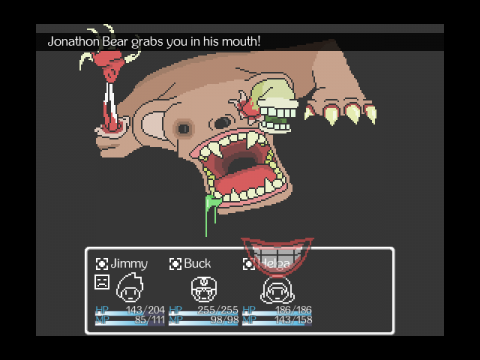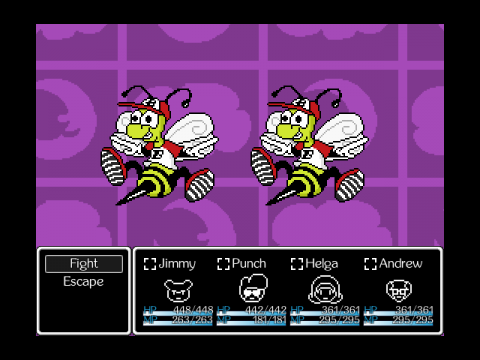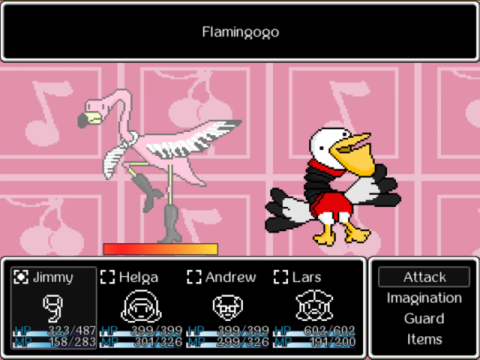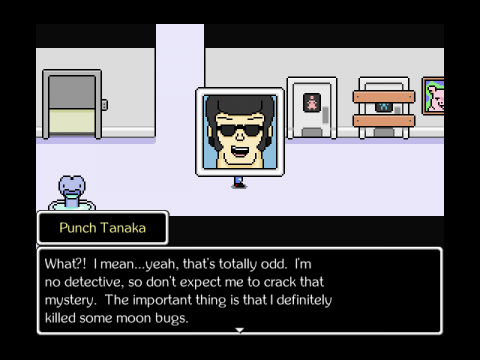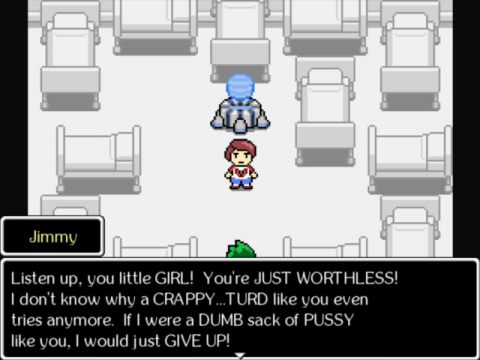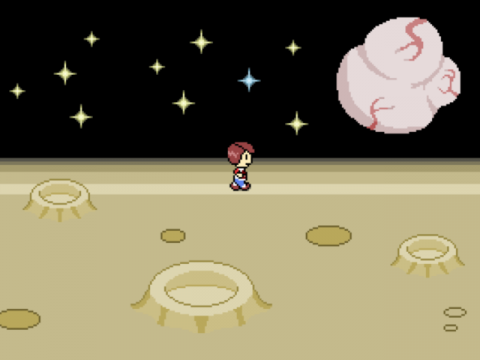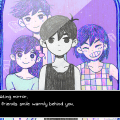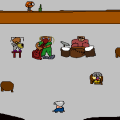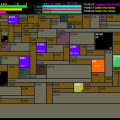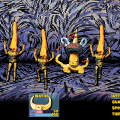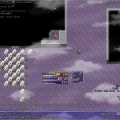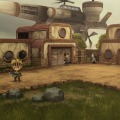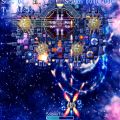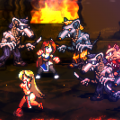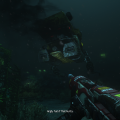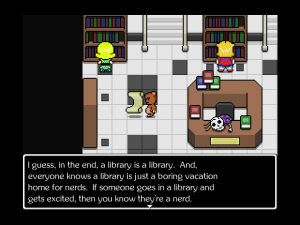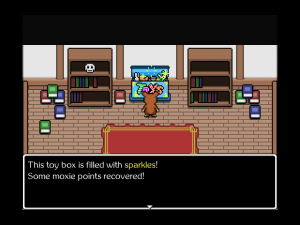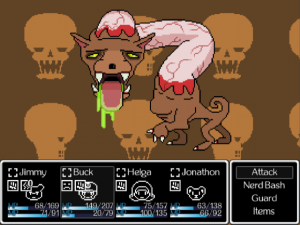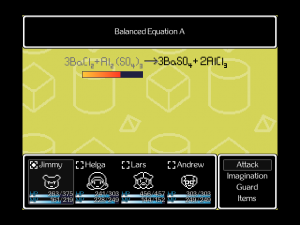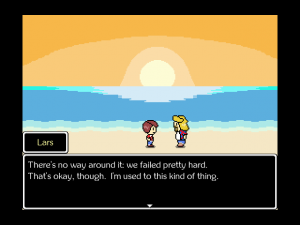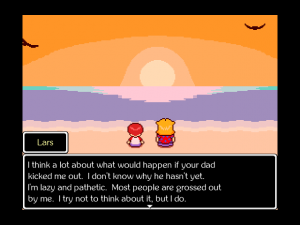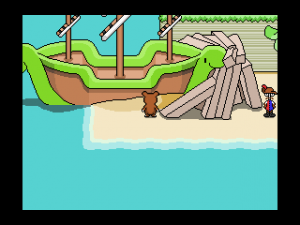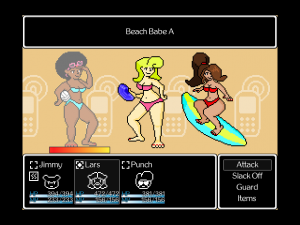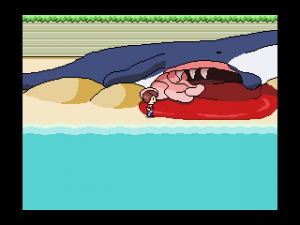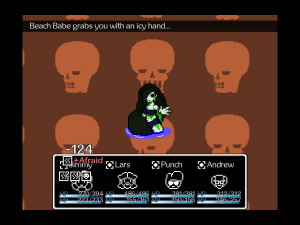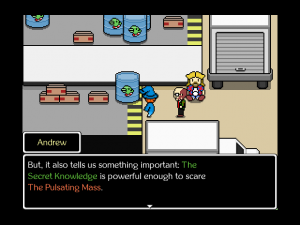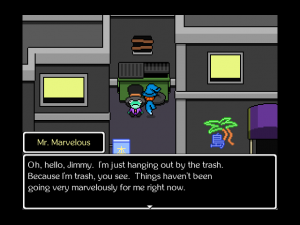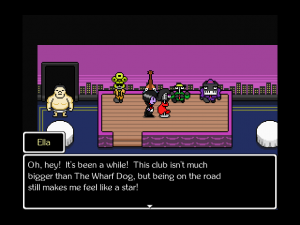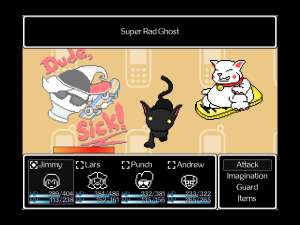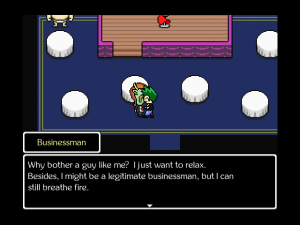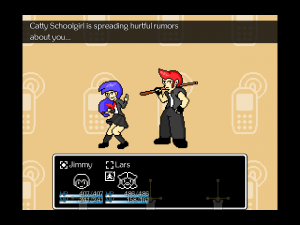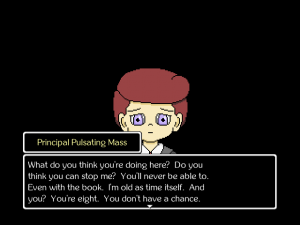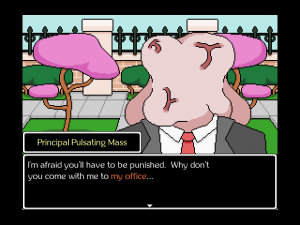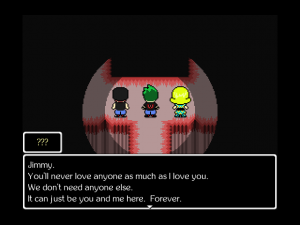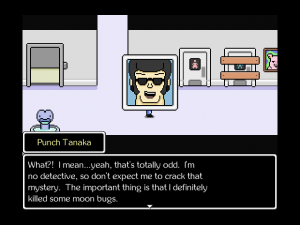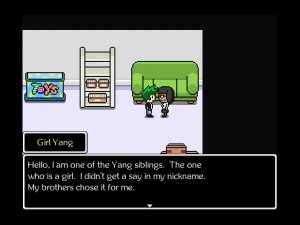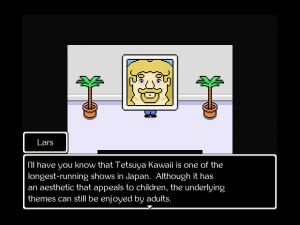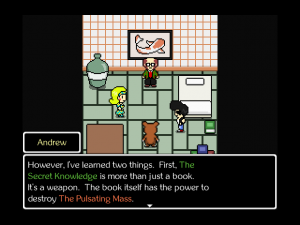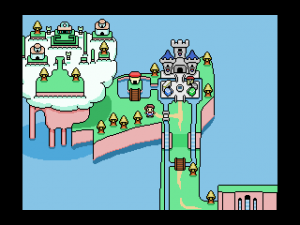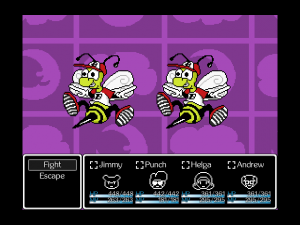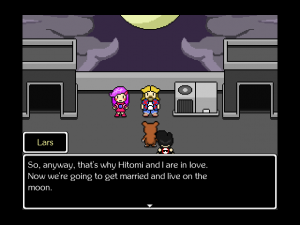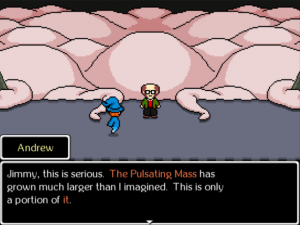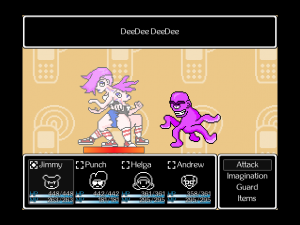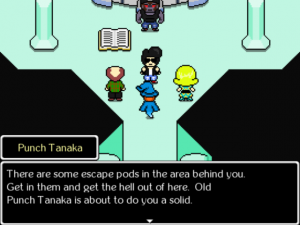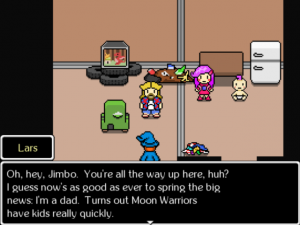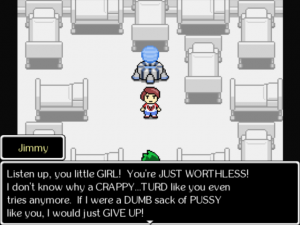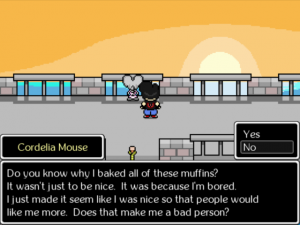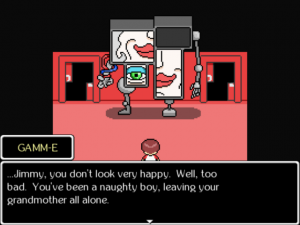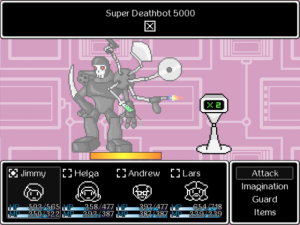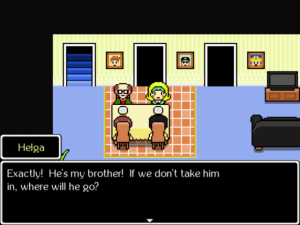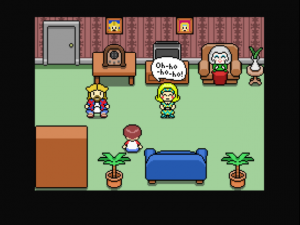There are many Earthbound-inspired games, all with their own interpretation of what made Earthbound special. Was it the modern day setting? The sheer zaniness and humor contained within a story that occasionally became serious? The way such a cutesy game suddenly made a left turn into otherworldly horror at the very end?
Games ranging from YIIK: A Postmodern RPG to Citizens of Earth to Undertale have all taken inspiration from Earthbound, some more overtly than others, and all had their own unique spin on the formula.
Enter Jimmy and the Pulsating Mass.
Made entirely by one man in Texas, Kasey Ozymy, using RPG Maker, Jimmy and the Pulsating Mass makes no attempt to hide its Earthbound inspiration. But make no mistake; looks can be deceiving, and this game is far more than the cheap knockoff it initially appears to be.
The description on its Steam page makes no attempt to hide what would normally be a plot twist: the game takes place inside the imagination of a young boy who is battling cancer. Both in the real world and in his imagination. But Jimmy is canonically only 8 years old, and the worlds the player travels through reflect that. This being an RPG, Jimmy has a party he travels with. But who are they? Mostly his family members, plus a few eccentric individuals who are happy to join the crew.
Jimmy
An 8-year-old boy who is battling cancer. He has the power of “empathy,” which allows him to understand how other people and creatures feel, which in turn allows him to transform into a variety of creatures such as a blob or a vampire. Jimmy is your typical RPG silent protagonist who never speaks.
Buck
Jimmy’s older brother. A stereotypical thug who dresses like he thinks he’s cool, and complains about how “lame” things are.
Jonathon Bear
Jimmy’s teddy bear. Jonathon is a character from a fictional TV show meant for little kids, and Jimmy has had him as a toy for years. In fact, Jimmy wanted him so badly that he literally stole him from the store and ran.
Helga
Jimmy’s mother. She’s a cheerful, lovable ditz.
Lars
Jimmy’s slacker uncle, and Helga’s brother. He’s unemployed, unintelligent, childlike in some ways, seen by many as a gross slob, and Jimmy’s dad dislikes him.
Andrew
Jimmy’s father. An absentminded professor type.
Punch Tanaka
A “cool” bully and leader of a gang of thugs, who has his own theme song. He fights you a few times before joining your party.
Hitomi
An anime-style “magical girl” clearly inspired by Sailor Moon.
Jimmy and the Pulsating Mass plays like a standard turn-based RPG, at first, but is loaded with many fresh gameplay ideas that add originality to that formula. Jimmy can use his “imagination” power of “empathy” to transform into different creatures. These creatures all have different stats (e.g. 110% of his physical offense, 90% of his magical defense, etc.) and have different abilities that play out both in combat, and in the overworld. For example, the blob can goad enemies into attacking it to summon fights if you’re looking to grind, and can also slip through grates. Or the goon can grab objects and even townspeople, which always causes them to produce unique dialog. Furthermore, using these forms in battle levels them up, resulting in Jimmy gaining new combat abilities or even equippable buffs that he can use even when he’s not in that particular form.
Items are limited in variety. Players can also only carry ten of their major healing and magic restorative items, which always restore a certain percentage of HP or MP. As a result, the items never become useless or outdated late in the game, but instead, are so useful that their price keeps going up relative to your progress. This prevents players from grinding to stock up on lots of items with limited purposes, and instead focus on a few very useful items.
And speaking of reducing grind, there is a difficulty selector that can be changed at any time. Easy mode may as well be called “grind skip mode,” since that’s basically what it is. But calling it “easy” is a little misleading. Because it does not stop bosses and enemies from becoming a challenge, due to another feature: many bosses and enemies have abilities that seem designed to counter your grind and force you to strategize. Abilities such as deflecting physical or magical attacks to hurt you, “mind control” that causes party members to attack each other, and even instant death attacks both immediate and timed. Boss fights can be brutally difficult and require some major strategizing to figure out how to deal with nasty status effects and buffs and deflection abilities, and playing on easy does not change that. Some regular enemies have puzzle-like elements to them, such as the alarm robots who always run away and summon a deadly powerful robot in their place if not killed immediately.
There are some very imaginative weapons and abilities for the protagonists as well. The dice do a random amount of damage ranging from low to high. There’s the 138 Gun, which does exactly 138 HP of damage, unless buffs are involved. And the vampire fangs, which do low damage but allow the player to absorb HP from the enemy. Jimmy can change forms mid-battle to access different movesets without using a turn, and it’s possible to obtain some additional abilities that can be activated without using a turn.
Party members have unique strengths. Lars can autoheal some HP every turn, and Andrew can regenerate some MP every turn. Andrew can inflict a one-time damage multiplier against an enemy. Another ability is to draw all enemy attacks to a specific person, so everyone else will be spared for a few turns. Bosses are not immune to these abilities, so they are always useful. In fact, the variety of buffs and status effects that can be used by both protagonists and enemies turns many fights into a puzzle.
To add further to the puzzle element of boss fights, some bosses have very unique characteristics. One boss fight is a robot with a counter that decreases by one with every attack, while the robot is unable to take damage unless the counter has reached zero. Thus, the number of times the boss is attacked is more important than the amount of damage done. Some other unique boss fights force players to think very differently than the usual RPG conventions.
Dungeons naturally have puzzles, and some require the use of Jimmy’s imagination abilities. While many of the dungeons are straightforward of the “follow this path, but take small detours to get treasure” school of design taken to an almost literal extreme, some have very creative puzzles, and a few are maze-like. Some dungeons suffer from repeating the same enemy encounters with little variation, while others mix it up more.
Now, let’s talk about the story and the worlds it takes place in.
The story itself goes all over the place and takes many detours, which is keeping in line with the idea that it’s all inside a child’s imagination. The mood ranges from laugh out loud funny, to sentimental, to creepy. Sometimes it’ll be a moment where Jimmy and other characters are forced into an arena to fight, and one of the fights is against Jimmy’s mom, Helga, who spends most of her turns being distracted by the crowd or casting healing spells on Jimmy, and not taking the fight seriously. Sometimes it’ll be Jimmy having a heartfelt talk with his loser uncle, Lars, who asks, “Are you embarrassed by me, Jimmy? It’s okay if you are.”
But sometimes, it’ll be Jimmy coming face to face with the pulsating mass. Cancer.
The pulsating mass is the game’s main villain, and it shows up many times and in many forms. Sometimes it’s a location, with Jimmy walking inside a throbbing, organic hellscape. Sometimes it’s an influence that possesses characters and turns them evil. Sometimes it’s a character itself.
The pulsating mass is often played for horror, but occasionally for a mixture of both horror and comedy at the same time. Such as when Jimmy goes to a school, and Principal Pulsating Mass, who is unable to speak due to his head literally being a cancerous mass, can’t respond to any of the students. But he sends psychic threats to Jimmy, before later fighting Jimmy’s party as a pretty tough boss with helpers repeatedly casting buffs on him.
The story’s mood frequently shifts to horror and back, sometimes abruptly, usually more gradually. At one point, Jimmy is in a mall filled with friendly ghosts, and must enter a TV. Once on the other side, Jimmy is on the set of a kiddie show that stars his teddy bear, Jonathon Bear. Creepy music plays, as Jimmy fights the cast of the show, despite the cast themselves not looking creepy… yet. Progressing through the set, it begins to get dark, and soon, the trees start to have eyes, then become twisted, then Jimmy crosses a bridge and walks onto masses of flesh with spinal cords and beating hearts. The enemies themselves also change: they become dark shadows with glowing red eyes, then horrible mutated forms, with each new form more dangerous than the previous. This culminates in a brutally difficult boss fight against… Jonathon Bear, who has mutated and turned evil, because he feels abandoned, as Jimmy is outgrowing him.
It’s clear that, with everything taking place in Jimmy’s imagination, many things are symbolic, even if their placement seems random. Some of the worlds are inspired by the media Jimmy consumes, and some are inspired by Jimmy’s exposure to things his family members have talked about or shown him.
But because Jimmy is eight, his understanding of adult topics is limited, so the worlds inspired by adult themes portray them in a childlike way. A gritty bay city has a nightclub where anthropomorphic musical instruments were scheduled to perform a song that would be sung by an anthropomorphic microphone, but when murders occur, a detective dish has to question everyone in the room. Jimmy’s mother’s reaction to this isn’t fear, but rather to complain that Jimmy has been watching too many scary movies with his older brother. Little things like this imply that Jimmy’s family knows they’re inside his imagination.
Or maybe that Jimmy is imagining what their reaction would be to the things they see. His family members’ attitudes range from Andrew taking everything that happens seriously and desperately wanting to destroy the pulsating mass, to Buck complaining that some of the worlds he visits are lame. There’s some ambiguity as to how much is “real.” Especially since some worlds are clearly symbolic of what is happening in Jimmy’s real world. Like a forest with heart monitor trees and syringe plants. An abandoned movie theater that plays clips from Jimmy’s life. And the telescope in space that lets Jimmy peer into the hospital room on Earth that he is staying in for real.
Other worlds contain cheerful, childlike imagery such as giant flowers and friendly looking bees. Until the bees become possessed by the pulsating mass…
While Jimmy and the Pulsating Mass has many areas that have cute music and cute graphics, this creates a larger contrast with the creepy, disturbing or even outright fleshy or gory areas. One optional sidequest involving a cutesy animal character encountered early in the game results in the player discovering… that character’s chewed up corpse.
The game isn’t so much a “kids’ game” as it is “an adult story told through the eyes of a kid,” and its portrayal of Jimmy’s imagination pulls no punches. His understanding of curse words and how to use them correctly is limited, and he doesn’t know anything about adult content. But he knows what blood is, and he certainly knows what cancer is, judging by the many forms it takes. He has an interest in the cute, the silly and the macabre, and we see plenty of those, sometimes at the same time. If you’re considering buying this game for your kid, it might be a good idea to play through it yourself or watch a walkthrough first. It gets violent, it gets creepy, it gets sad, and it contains occasional mild and sometimes heavy profanity. Most of the time, it’s fairly upbeat and sometimes even hilarious.
The game’s enemies are very creative and even wackier than Earthbound’s. Such as shapes that attack “the appropriate number of times.” A chemistry equation in two parts that “rebalances” itself by reviving its dead half if you kill half of it. A surfer who sometimes randomly wipes out and defeats herself. Parodies of the Twilight protagonists, who are called “Romancepires.” A gang member named Big Enormous, who later shows up in a mutated form named “Big Enormous Slug.” There’s a lot of humor in the battle descriptions as well, such as the sage who “sees a beating in his future” during the fight.
There’s even wacky things you can do in the combat. For example, when Jimmy is in his Goon form, you can “grift” enemies, which is robbing them of something during the battle. For example, when fighting Johnny Knives, you can steal his knives, turning him into “Johnny No-Knives” and removing the cockiness from his face and weakening him. When fighting a shape, you can steal one of its sides to change it into another shape (e.g. turning a square into a triangle, or a triangle into nothing). You can even steal “dignity” from one enemy!
There’s also a ton of humor in the dialog and story. For example, at one point, Jimmy, Punch Tanaka and Lars go to school undercover in the hopes of obtaining a book of secret knowledge to defeat the pulsating mass, and Lars has to pretend to be a high school student (who is somehow best friends with an 8-year-old, which is his excuse to hang out with Jimmy), and he ends up taking remedial classes and having his obvious visible beard mistaken for a medical condition. One of the classmates turns out to be Hitomi, a Sailor Moon parody with a totally transparent secret identity, who Lars and Punch both develop crushes on. Despite Punch trying to impress her with obvious lies, she ends up preferring Lars, who is totally honest.
While the game can be very funny, it is ultimately about the imagination of a boy who is battling cancer in the real world. His symbolic daydreams are his way of coping with it. As you get farther in the game, the symbolism becomes increasingly less subtle, and there’s more sadness, horror and tragedy. We also see many flashbacks of Jimmy’s real life, which may or may not be a little exaggerated.
There’s also a lot of optional content, which contributes to the story. It includes numerous optional dungeons and special areas that can only be reached if you’ve done certain things, and many give very useful rewards. Some of the dungeons are themed after specific fears, such as claustrophobia, being lost, or the dark. Others are themed after Jimmy’s memories.
Jimmy and the Pulsating Mass has a presentation that is both basic and yet stylized. Graphics never evolve past the level of the Super NES, and it doesn’t even run in widescreen. The synthesized music shows a wide range of genres and moods, and some creative use of sampling or merging multiple genres or moods into a single song. The theme song has the sound of a heart monitor subtly mixed in. A math cave contains the sound of voices counting or doing multiplication and division mixed in with the melody.
Like Earthbound, fights contain symbolic backgrounds, which are often themed after the current location or mood. Every fight begins with the screen fading into the word “Fresh” accompanied by a record scratch. A funky riff plays whenever one of Jimmy’s imagination forms levels up. On a more low tech note, townspeople never move except for story reasons, and are otherwise always standing in place, usually not animated.
Even with its obvious Earthbound inspiration, Jimmy and the Pulsating Mass feels like an evolution of Earthbound’s ideas. While Earthbound gave us a story told with a lot of humor, wacky enemies, some sentimentality and a sudden left turn into horror right at the end, Jimmy and the Pulsating Mass refines these elements into something that has more purpose. The horror and sentimentality represent something very real. Instead of a random mess, this feels like a meaningful step into the mind of an imaginative child who is battling cancer and has been through hell and back in the real world, and whose understanding of adult concepts is very limited. Jimmy is dealing with it all in his head the best he can. The game aims for places Earthbound never did, and it reaches them.
